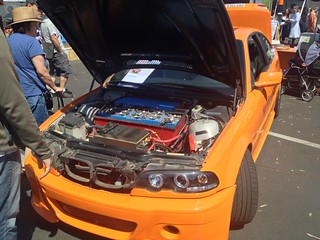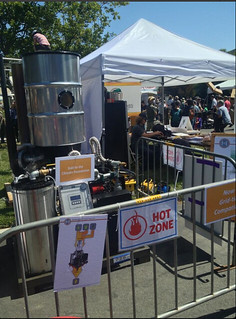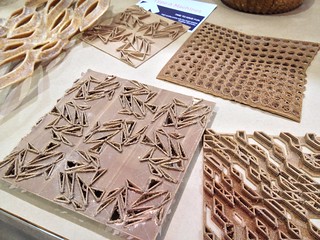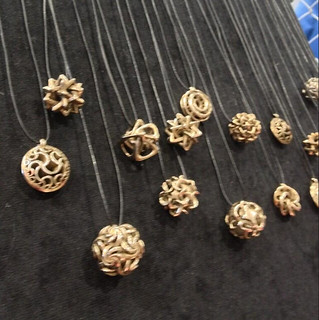For my third year, I spent yesterday at the Maker Faire, in Silicon Valley. Unlike any other year, the crowds were overflowing, suggesting this movement was growing faster than the cottage industry before. To put this into context, the maker movement is yet (another) disruption to brands, here’s the lineage:
[Disruptions Summarized: 1) The Internet democratized knowledge, 2) Social Media empowered crowd, 3) Collaborative Economy endows crowd to buy once, share many, 4) the Maker Movement aims at buying from brands no more.
[Disruptions Summarized: 1) The Internet democratized knowledge, 2) Social Media empowered crowd, 3) Collaborative Economy endows crowd to buy once, share many, 4) the Maker Movement aims at buying from brands no more.
I must honestly confess, I struggle to keep abreast of all the new technologies, and I suspect corporations are experiencing the same. It’s my full time job, I attend these events on weekends, and we’ve a company dedicated to tracking and helping companies navigate, and I see the disruptions accelerating. Here’s what the maker movement means to corporations and brands:
[The maker movement empowers people to build their own products, and share with each other –rather than buying from brands]
[The maker movement empowers people to build their own products, and share with each other –rather than buying from brands]
Those involved in the maker movement are creating their own goods and products, using recycled materials, or improving on existing products. Some are selling the goods to each other, some trade, and some simply just use for their own personal usage. They use technology, skill, community, and massive fairs to connect and grow. So what are the disruptions to corporations and brands by the maker movement?
Brands are disrupted by the Maker Movement.
- Technology empowers the maker movement. The movement is already connected on digital communication channels, see Make magazine, social networks and online marketplaces like Etsy that enable individual artisans to sell, trade, or buy unique goods. Furthermore, the birth of 3D printing is spurring on a new class of goods created beyond jewelry and toys as furniture or home designs emerge
- Several key industries are ripe for disruption. Energy can be disrupted from biomass converter creates energy from leaves, walnut shells, from a variety of solar solutions. Also, consumer goods, industrial goods, toys, media, consumer electronics, can be impacted from 3D printers, a call out section directly below. Additionally, even in dense living, food supply chain be impacted as home gardens and solutions become more available.
- The maker movement is accelerating. Having attended a few of these events, I was surprised by the sheer volume of attendees yesterday. As technology becomes mainstay for future generations who are all connected and learning to use technology, our next generation will be more adapt at creating –rather than consuming. In many ways, this is just a swing back to the old village ecosystem where every family had a key skill: smith, baker, cook, and beyond, Yet now, we’re not bound by geographic limitations of knowledge, goods, or materials.
| Technology Call Out: 3D Printer Market Accelerating While there were many technologies feature, I wanted to focus on one area of heat, 3D printers. Previously, Altimeter saw the 3D printer market as fragmented, with the industry not cohesive. While the space is exploding, there are dozens if not hundreds of 3D printers on the market, and an entire expo hall dedicated to them, each with a variety of specs. We expect consolidation as the market matures. Some key findings yesterday:
|
Opportunities abound: Brands can leverage the movement.
- Mindset change: become an enabler of this movement. I spent time with RadioShack (thanks Cosmin) at the show, who showed they were enabling this movement. They were providing free training for soldering education and hands on work, and also hosted a popup store selling components and controllers like Arduino. In previous years, Google, Yahoo and other tech companies have sponsored booths to enable future creators and engineers.
- Build a marketplace that builds new products around you. While I’ll cover this more in depth on my upcoming report on the Collaborative Economy, brands can host a marketplace around them, enabling customers to buy and sell and make their future products on hosted communities. See how Shapeways enables 3d printed jewelery artists to host, sell, and offer products –now, imagine a branded website from your company.
- Offer customized products directly to consumers. Rather than become disrupted as consumers purchase 3D printers, instead provide or host them. The future of Target, Walmart, Nordstrom, or Macy’s could be to host a showroom, then print out 3D products in near real time, or for immediate pickup. Imagine retail stores shifting from show and sell to show and make.
On a related but broader context, Altimeter has found four major business themes from the disruption these movements are causing, read about the highlights here, and a formalized report comes soon. Below are some select 6 second vine videos and images which help to illustrate the experience

Above: Combustion cars being converted to electric

Above: Turn biomass (Leaves, wood, in this case, walnut shells) into electricity to power your home

Above: Close up of the 3D printed wood

Above: Intricate 3D printed plastics

Above: Close up of the 3D printed wood

Above: 3D printed stainless steel and bronze jewelry
Above Video: 3D printed Concrete, Salt, Composite and more
Above: Rather than buy toys, print them
Above: 3D Printed Wood.
Above: The massive 3D printer pavilion
I should also add that we saw Ford and GM at Maker Faire, in addition to Autodesk and RadioShack. Very low brand adoption –a blue ocean!
Thanks for sharing this stuff. This is cool, but why would you think that the Maker movement would transcend brands? It will be like “custom” houses – where you buy particular plans (templates from name architects = “brands”) off the Internet. You want toys? Well you can have a generic toy designed wherever, or you can program your printer for a Mattel ™ toy or whatever you want. It means toy designers will not have to use middlemen – toy companies or distributors – and so on.
Definitely agree with you Jennifer! Cool stuff indeed!
I agree that there’s tremendous potential for disruption in 3D printing, but my sense is that the timeline involved is more like 5-10 years. There is still a long way to go before 3D printed goods become even remotely cost effective competition to traditional production chains.
See this post from friend Francine who also went to the Faire
http://blog.stealthmode.com/2013/05/maker-faire-and-the-end-of-the-industrial-age/
Wish I could have spent more time there, but was with a couple of children who got bored. Another opportunity for brands is to become a “house of brands”. Eg, I noticed many (like jewelry makers) making high-end products that can be 3D-printed on demand. They’re largely relying on direct to consumer sales, but as you noted, sometimes connected to a network. I could see a trust brand like Nordstrom’s endorse/support under their channel artisans for in-store or e-comm ordering. The number of brands Nordrom carries today is (I imagine?) in the hundreds, they could sell tens of thousands of brands with exclusive artisans relationships.
This is a VERY interesting time. Nice to see digital, applied in a very new way.